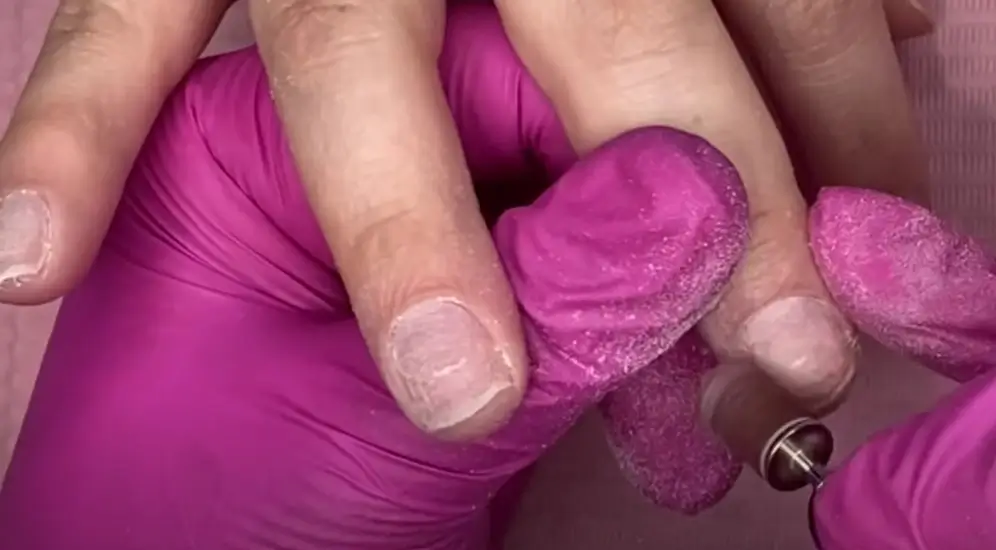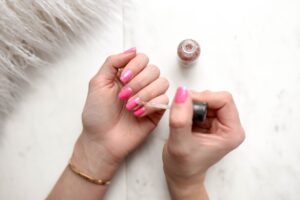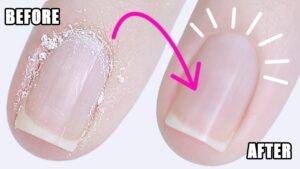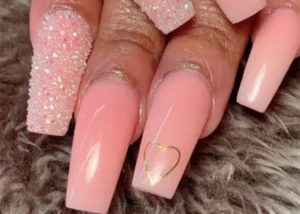The Things You need to know about Why do Acrylics Hurt?

Acrylic nails are a popular option for nail art because they offer a wide range of designs to choose from. But why do acrylic nails hurt?
Acrylic nails are a great choice for most people who seek to paint different colors and patterns on their nails, but they aren’t always the best option when it comes to lasting time. People reported painful experiences after using acrylics and getting their nails done. While the problem seemed subtle, it could also get worse over time.
Acrylic nails do have their drawbacks. Acrylic nails hurt when you put them on, and they can damage your natural nails underneath. Acrylic nails can cause pain. Avoiding these types of nail care products can stop the pain from occurring altogether.
This article will explore why do acrylic nails hurt and what can be done to reduce the pain while wearing them.
13 Reasons For Why Do Acrylic Nails Hurt
Acrylic nails are popular for their durability and flexibility. However, they are not without their own set of problems that can make them painful to the wearer. Below are the reasons why do acrylic nails hurt.
1. Too much filing to natural nails
Filing your nails is an essential step in acrylic nail application. Acrylic can’t bond with soft, uneven, or broken nails so filing ensures that the surface is dry and provides a good surface for acrylic nails. Daily filing can cause your nails to thin and become brittle, which results in them being more prone to pain.
Acrylic nails are thick and have a hard shell that covers your natural nails. As a result, any physical impact will be passed to the nerve at more speed than with longer, less thick nails.
To avoid this, take care that your nail tech files your nails with precision. And also make sure to use the correct nail file for the style you want, too. For example, if you’re doing a light filing use a gentle file.
2. The cuticles were not prepared correctly
Your cuticle is the clear skin at the back edges of your nails. It is crucial that they be pushed back and in some cases trimmed before applying acrylic. When your cuticles are unprepared, it will be more difficult to get a good seal around the natural nail. As a result, the acrylic might not go all the way and will end up on your cuticles which could eventually cause them to lift.
If you push your cuticles back with too much force or trim them the wrong way, it can cause pain to your nails and even lead to an infection.
Make sure not to trim your cuticles, if you need to do so, it should only be the skin of a cuticle that is no longer being used.
In order to soften your cuticles, soak them in warm water mixed with oil and soap. After that, arrange the cuticles back into place using a cuticle pusher.
3. Nails were not strong enough
If your nails are thin and fragile, they can become painful when you apply acrylic to them. This is because the nerves under the nail will be more sensitive.
In case you have fragile nails, be careful when doing acrylics. Wait until your nails are healed and invest in a nail strengthener.
4. The Acrylic Nails Shrinking
Acrylic nails usually shrink and tighten which can cause pain, discomfort and other issues. This can happen overnight or during the first few days after they are applied.
5. Allergic
If you are trying acrylic nails for the first time or trying a new product such as a different brand and you start experiencing pain in your nails, it may be because of an allergic reaction.
Acrylics are typically harmless when you’re wearing them but if there are signs of an allergic reaction it is important to remove them. If the symptoms persist and don’t go away, I would recommend you make a dermatologist appointment for a consultation.
6. Thick Acrylic Nails
If your acrylic nails are too thick, this can cause some discomfort. This is because the extra thickness adds weight which increases the stress to your natural nails and makes them feel uncomfortable.
When applying acrylic nails it’s best to do thin layers. This will make them look more natural and place less strain on your nails.
7. Too Long Acrylic Nails
Acrylic nails that are too long can feel more uncomfortable. Hitting them can cause severe pain. If your acrylic nails are too long, you can file them down.
8. Nail Snagging
Acrylic nails can be hard to put on, as they often catch on the natural nails and don’t set properly, especially when you are working with artificial nails. This causes a variety of health issues you might want to keep in mind before pulling out your colorful nails. It’s also possible that the cause of this could be someone pulling your nails or poking at them. This can cause a nail break or irreparable damage to your nails and other parts of the body.
9. Fungal Infection
Acrylics can start to peel away from the natural nail, causing a small gap. This space can then be prone to fungal infections and could cause problems for your fingernails. The way you prepare nails and the way everything is positioned is important here. If you do not establish these nails properly, nail fungal infections will likely develop throughout.
Some useful tips for maintaining your nails whilst using acrylics: make sure all tools are cleaned before you start the application process; keep your nails clean and dry by avoiding wet surfaces and painting them only when they’re completely dry.
10. Nail Primer
A nail primer is a protective coating applied to your nails to prevent the nail polish from chipping or wearing off quickly. Now, there are many different types of primers, but one that can be potentially damaging to your nails is the kind of primer that contains formaldehyde.
Nail primers that contain acid work by making microscopic holes on your nail plates so that the acrylic can bond and anchor onto the nails better.
It is always best to use nail primer without harsh chemicals, and one of the best non-acid primers is Young Nails Protein Bonder.
11. Force To Nails
Some nail techs may not be aware of their own strength and use too much force when working with your nails. The result is usually sore nails. Please ask your tech to take their time on your nails and use a gentle touch.
12. Cracked On Nails
This is another reason that acrylic nails can hurt. This is because the underlying fingernail could be cracked from the repeated activity of the fingers. This is an uncomfortable feeling which leads to pain and can be prevented by taking care of your nails.
Many different types of cracks exist and they can be either shallow or deep. For a deep crack that can cause soreness, it is important to keep your fingers moist to help the healing process. If you have an ingrown nail that gets infected, the nerves underneath may be sensitive to pain for a long time after the ingrown nail is removed.
13. Pointy Tips
Many people have doubts about the comfort that acrylic nails provide. As a result, many prefer rounded nails. The rounded shape also provides a lot of cushioning between the nail and your hand or object that it comes into contact with. To avoid breakage, you ought to file your acrylic nails into a more traditional shape such as an almond so they will return. To do this you should use some fine-cut emery boards to take difficult, sharp edges off your nails.
Conclusion For Why Do Acrylic Nails Hurt
Acrylic nails are a popular choice for many people because they are strong and durable. However, they can be painful to remove and removing them is difficult. They require heat or chemicals to remove them safely. The chemicals used in the process can damage your nails and skin if you do not take proper precautions.
There are a lot of possibilities – including 13 main ones – when using acrylic nails. However, there are still other low possibilities that could hurt.
Now you know about most of the possible reasons why do acrylic nails hurt and how to reduce the pain. To learn more about the solution, keep reading.
how to repair nails after acrylics?
Acrylic nails are a popular type of nail enhancement that has become common in the beauty industry. However, they can be damaging to your natural nails and cause a lot of problems.
There are so many ways you can try to repair your nails after acrylics, but the best way is to stop using acrylics for a while and follow below steps
Keep Nails Shorter
Keeping them trimmed without extensions will also reduce the chances of your natural nails breaking at the most inopportune moment, as they always do.
To ensure that your nails are strong enough to last you, the advice to you is to cut them down every three weeks and start fresh. The key is just to make sure they are healthy and check for any signs of weakening so that when it’s time, the nails can be cut evenly with no more dead parts.
With Nail Hardener
You can use polishing to help your nails look better and healthier. You can polish them once a week for a few months and your nails will start to regain their shine.
Keep Natural Shape
Everyone likes their nails to be sculpted in a creative & often unnatural. Shaping your nails in this way can help them grow faster without cracks or breakage.
Receive a Timely Treatment
When your nails are in the worst condition, use a professional treatment system. It uses protein and hydrating oils to fill in all the areas of damage on your nails, resulting in a much healthier nail even after one service.
Eat the Right Nutrients
Include biotin and omega-3 rich food in your daily diet which can strengthen your nails. You can find biotin in foods like almonds, avocados, eggs, peanuts, or sweet potatoes.
Wait New Nail Out
All of our pros said that your nails can be nursed back to health, without a doubt, but it’ll take time.
Your damaged nail may need to grow out before it can be replaced. In the meantime, you should moisturize your skin regularly with a hydrating lotion or cream, and stay away from acrylics. see a professional for their advice if needed.
How Long Does it Take to remove Acrylic Nails?
Acrylic nails are durable and long-lasting, but they can be difficult to remove. There are many ways to remove acrylic nails, such as soaking the nails in acetone, using a pumice stone, or using a nail file.
It is not recommended that you use your teeth. You can also use a nail file to gently scrape the surface of the nail to break it down and then soak your fingers in acetone for 10 minutes. It is important that you do not let the acetone dry on your fingers before removing the acrylic nails because this will make it more difficult to remove them.
Acrylic nail removal takes from 20 to 45 minutes on average, depending on the method you choose.
How To Make Your Acrylic Nails More Comfortable
Acrylic nails are becoming a popular choice among women who want to be trendy and stylish. However, they can also be uncomfortable if they are not shaped properly. So, what is the best way to make your acrylic nails more comfortable?
First, make sure that your nails are filed down and shaped correctly.
Second, use a thin layer of cuticle oil on your nails to prevent them from getting too dry and brittle.
Third, apply a layer of clear top coat after you have applied two coats of polish. The top coat will help to seal the acrylic nails and prevent them from coming off.
Tips on Using & Maintaining Your Artificial Nails Safely
Painful acrylic nails are a common problem for many people. They are a pain not only for the person wearing them but also for those around them. This is because acrylic nails are usually made from materials that can be easily broken or chipped off. The process of painting them is also quite painful and can take up to two hours with some people even opting for a professional nail technician.
The best way to prevent this is by using the proper tools and techniques when doing your nails. In addition, you should always use gloves when painting your nails so you don’t get any skin on your nails or fingers exposed during the process.
However, there are some safety precautions that you should take when using artificial nails. It is important to know how to use them properly and keep them safe from harm.
Some people might choose to use artificial nails in place of real ones because they have a hard time finding the time to go get their nails did or they don’t want the hassle of having to put on nail polish every day. However, it is important that you take care of your fake nails before they cause any harm or damage to your natural nails.
Best Alternative Way For Easy & Safe Nail Art – Press On Nails
Why Press On Nails?
Press on nails are a type of temporary nail polish that is applied by pressing it onto the natural nail. It is a popular alternative to acrylic nails because it is cheaper, lasts longer, and is safer to remove.
Press on nails are becoming more and more popular among women because they are easier to apply and take less time to dry than gel nails. They also last longer as they don’t require UV light application.
Where To Get Best Press On Nails?
Press-on nails are designed for people who want to have a quick manicure without having to go through the hassle of having an acrylic nail.
You can apply press on nails without damaging your natural nail or causing any discomfort in your fingers or hands. It’s the ultimate way to avoid suffering from acrylic nail pain is to avoid getting damaged by acrylic nails.
There are a lot of places to get press on nails. But not all of them are good. Some might have high prices, while others may be too far away from you. There are also some that don’t provide the best quality. In order to find the best place to buy press-on nails, you should consider these factors:
– Price
– Location
– Quality of service
– Quality of product
It is also important to remember that the cheaper it is, the lower quality it might be. Quality of product is also an important factor. Now you don’t have to spend a lot of time doing research and SENA NAIL does provide press-on nails of the best quality for the best price. It’s easy to get to use them. There are many colors and styles to choose from and they’re not damaging to your nails especially when you use adhesive tabs.
If you want to learn more about the comparison between press-on nails and acrylic nails, you can learn from press on nails vs acrylic.



